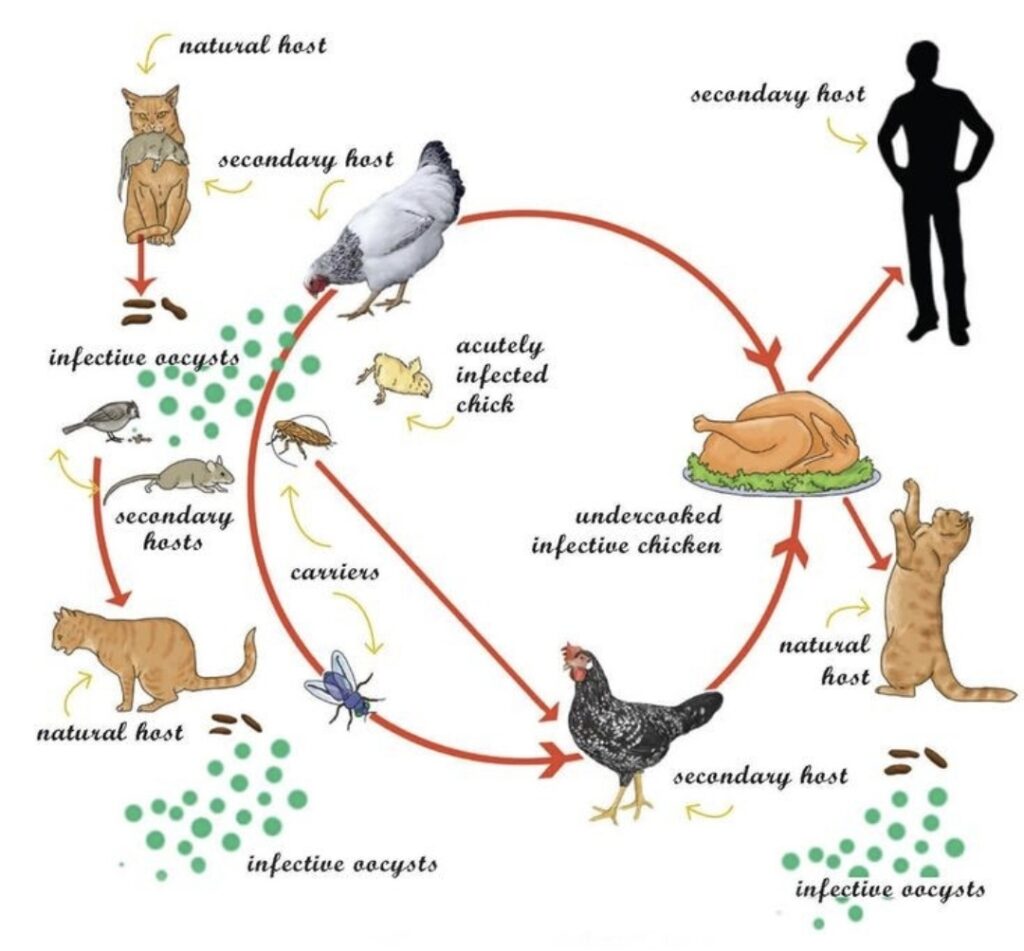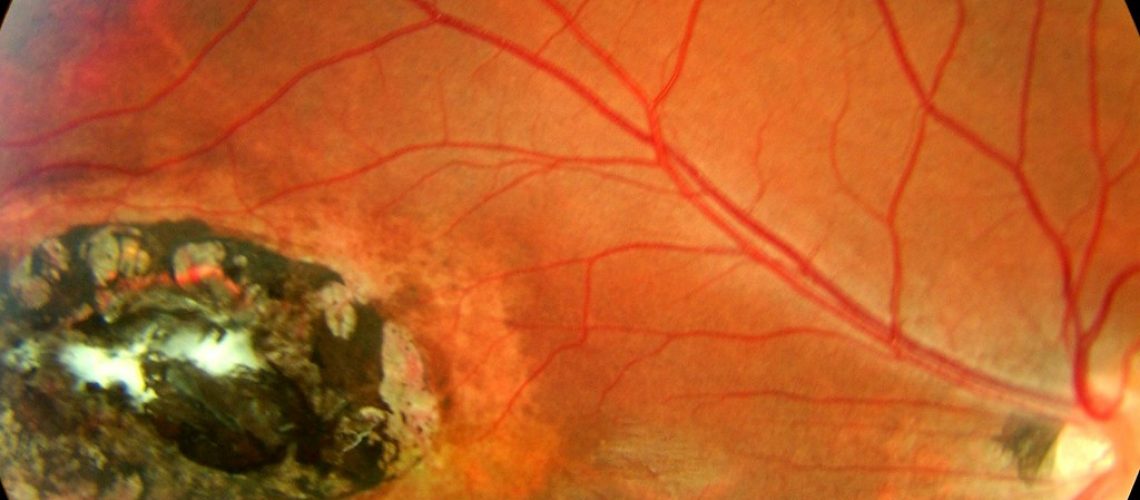It’s an infection of the inner part of the eyes due to a parasite called toxoplasma gondii. It is the most common cause of uveitis. Uveitis is an inflammation of the uvea, which supplies blood to the iris and retina.
About 500 million people are infected with this parasite. It can be congenital or acquired throughout life. Toxoplasmosis can cause vision loss and in some cases even blindness. It can be acquired by contact with unwormed cats, vegetables or fruits that are not washed, and/or poorly cooked meats. It is worth mentioning that there are people who are immune to the parasite because they have the antibodies to fight it. The parasite is found in cat feces and undercooked meat from infected animals, such as poultry, lamb, and beef. Toxoplasma can also be found in contaminated soil, where it can infect and multiply in small rodents, which are then eaten by cats.

Ocular toxoplasmosis is an infection whose diagnosis is based on ocular findings and confirmed by blood tests.
Symptoms:
- Blurry vision
- Eye pain
- Light sensitivity
- Flu-like symptoms, such as fever, muscle aches, and headache
- Fatigue
- Swollen lymph nodes
- Rash
- Conjunctivitis (red, inflamed eyes)
- In severe cases, severe headaches, confusion, and seizures can occur.
Risk factors
Some people are at a higher risk of contracting toxoplasmosis.
- Handling or consuming undercooked or raw meat
- Cleaning cat litter boxes
- Eating contaminated fruits and vegetables
- Poor hand hygiene
- Working with soil or with infected animals
- Having a weak immune system
Treatment
Its treatment is based on the use of antibiotics and corticosteroids for at least one month and depending on the severity of the infection.
In advanced cases, the visual prognosis is reserved due to the location of the damage produced by the parasite in the retina. The retina of the eye is a primary site of infection with this microorganism, so the most common ocular manifestation of toxoplasmosis is chorioretinitis.
Prevention
To reduce the risk of contracting toxoplasmosis, follow these preventive measures:
- Cook meat to a safe temperature. The Centers for Disease Control and Prevention (CDC) recommends cooking meat to an internal temperature of 165°F (74°C) to kill any Toxoplasma parasites.
- Wash your hands thoroughly after handling raw meat or working in soil.
- Wear gloves when handling cat litter boxes or soil.
- Wash fruits and vegetables thoroughly before eating.
- Avoid eating undercooked or raw meat.
Toxoplasmosis is treatable but not curable, which means the parasite can reactivate and continue to cause damage to the inside of the eye. One trigger is stress and anxiety.
Toxoplasmosis and Pregnancy
The effects of toxoplasmosis on an unborn child are serious. Toxoplasmosis is a parasitic infection that can affect both the mother and her unborn child if the mother contracts it while she is pregnant.
Women should take the same precautions against contracting toxoplasmosis as they would against any other illness. Women who are expecting should also not clean cat litter boxes or handle cat litter. It is recommended that gloves be worn and hands washed thoroughly after cleaning the litter box.
Visit your trusted ophthalmologist at least once a year for a comprehensive eye examination.





